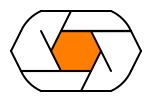

Sauron is an HTML web framework for building web-apps with the goal of closely adhering to The Elm Architecture, a paragon of elegant design.
Sauron follow Elm's simplistic design of writing view code.
```rust use sauron::prelude::; use wasm_bindgen::prelude::; use log::*;
pub enum Msg { Click, }
pub struct App { click_count: u32, }
impl App { pub fn new() -> Self { App { click_count: 0 } } }
impl Component
fn view(&self) -> Node<Msg> {
div!(
[class("some-class"), id("some-id"), attr("data-id", 1)],
[
input!(
[
class("client"),
type_("button"),
value("Click me!"),
on_click(|_| {
trace!("Button is clicked");
Msg::Click
}),
],
[],
),
text!("Clicked: {}", self.click_count),
],
)
}
fn update(&mut self, msg: Msg) -> Cmd<Self, Msg> {
trace!("App is updating from msg: {:?}", msg);
match msg {
Msg::Click => {
self.click_count += 1;
Cmd::none()
}
}
}
}
pub fn main() {
Program::mounttobody(App::new());
}
index.html
html
In Cargo.toml, specify the crate-type to be `cdylib`
toml
[lib]
crate-type = ["cdylib"]
```
Build using
sh
$> wasm-pack build --target no-modules
Look at the examples
and the build script for the details.
html2sauron - A tool to easily convert html into sauron node tree for your views.
Note: When writing the view in sauron, just keep in mind that the function name is the element tag you are creating and there is 2 arguments for it. The first argument is an array of the attributes of the element and the second argument is an array of the children of the element.
Example:
rust
div!([id("container"),class("hero")], [text("Content goes here")])
div macro call is the element tag.
The 1st argument in the call is an array of attributes for the div element expressed in a
function call id and class which are valid attributes for a div.
The 2nd argument in the call is an array of the children elements, and you can nest as many as
you like.
sh
cargo install wasm-pack
cargo install basic-http-server
Sauron is one of the fastest.


License: MIT